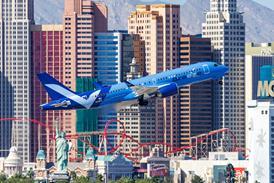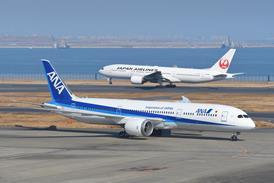For the first time in years Airbus may be in danger of trailing Boeing in technical innovation. Can the European company learn from history?
Has Airbus won the marketing battle only to lose the technical war? In the past, in fact since Airbus was first fighting for A300 sales, the question was always reversed. Airbus gained scalp after scalp by technical innovation and, ultimately, marketing guile as it gradually established itself and amassed the credibility that it enjoys today. Now, as it stands on the threshold of what many consider its crowning achievement with the birth of the A380, it faces the threat of losing the technical edge to Boeing with the 7E7.
But what if it has, and why should it matter? After all, the order books are solid and Airbus appears to have Boeing up against the wall in most market sectors as it looks forward to hoped-for happier times in 2004. More than this, Airbus has remained committed to the A380 throughout the ups and downs of the last few years, while Boeing has been fighting to re-establish credibility after the false dawns of various 747 derivatives and the much-vaunted Sonic Cruiser.
The answer could lie in history, and in particular the fate of Pratt & Whitney's once ubiquitous JT8D engine, or McDonnell Douglas (MDC) and its family of "DC jets" - both victims of the classic product development cycle trap. P&W invested in technology in the 1950s and 1960s and reaped the reward with the JT3D and later JT8D engines. But the business case could never be made to invest in a step-change: no-one wanted to hear about next generations. So when the CFM56 came along, P&W's response was too little, too late.
Similarly, MDC kept long-standing customers from the 1960s happy by basing its product line for the 1980s and 1990s on derivatives of earlier designs. The result was that by the middle of the last decade it had a tired looking product line that could not compete with the more advanced rivals emerging from Seattle and Toulouse. Boeing itself narrowly avoided the trap with the 737, which it reincarnated with its Next Generation (NG) initiative in the mid-1990s, in response to the A320 family.
Until the emergence of the A330-200 in 1998, Airbus had been well and truly beaten in the long-range twinjet market by the 767-200ER/300ER, as its initial offerings - the A300-600 and A310 - fell short of their US rival in performance terms. But the arrival of the A330-200 put Airbus a generation ahead and Boeing struggled to catch up with its warmed-over 767 derivative, the -400ER. The US manufacturer knows that it can only compete in this sector in the long term with an all-new 7E7-style aircraft that will leave the A330 standing.
With the A330-200 still a relatively young programme, Airbus finds itself the victim of the development cycle dilemma that has so often afflicted its rivals. Does it stick with the A330 and make hay while the sun shines in the five years until the 7E7 arrives? Or does it take a longer-term view by launching a new or updated family - despite the fact that there is nothing much wrong with the existing product? With near-term distractions like the A380 and A400M, Airbus probably does not have the appetite to create another all-new aircraft programme just yet.
While incremental improvements are necessary to keep on top of the market from time to time, these traditionally bring efficiency improvements in the 5% range, not the market-winning 15-20% generated by the step change. But these are not for the faint-hearted. The more that emerges about the 7E7, the more it is becoming apparent that Boeing is taking a huge leap with the all-new aircraft. The surprising aspect is that none of the technologies in themselves are risky. Composite structures, advanced electrically driven systems and power-by-wire systems are well-understood. What is unprecedented is the combined use of all this technology in one new design at the same time, and the fact that some of the advances have never been outside the laboratory. That is the risk, but by taking it Boeing is about to switch roles from being the incumbent to the insurgent.
Boeing gained its 50-year dominance by taking massive risks with first the 707 and then the 747. It milked the derivative approach for all its worth, but is taking as much of a risk again with the 7E7, albeit this time beneath the skin.
Is Airbus seeing the signs? Will it avoid the derivative trap or hedge its bets, hoping to ride out the risk while it absorbs the massive costs of developing the A380? For competition reasons, the airlines will hope its recent series of 200- to 250-seat sector customer forums in Asia, America and Europe are more than an exercise in rearranging the deck chairs on the Titanic.
Source: Flight International























